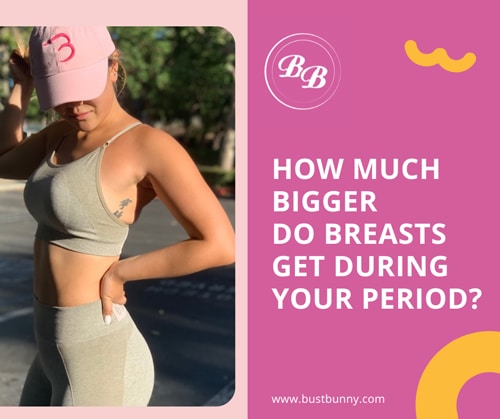Limited time offer!
JULY SALE, use code "JULY10" to get 10% OFF
Your B cup bra suddenly doesn’t fit anymore, and you know that time of the month is approaching. Many women experience shifts in breast size during PMS, some carrying over to menstruation itself.
No matter how you feel about this change, chalking it off to hormones doesn’t cut it. A modern woman is one who understands her internal processes and the ways to minimize or harness them.
At Bust Bunny, we study female hormones and seek to stabilize them for a happier, more comfortable life. We also provide natural products that can turn your body into a source of confidence, not insecurity.
Here’s what a happy customer had to say about our natural breast enhancing supplement:
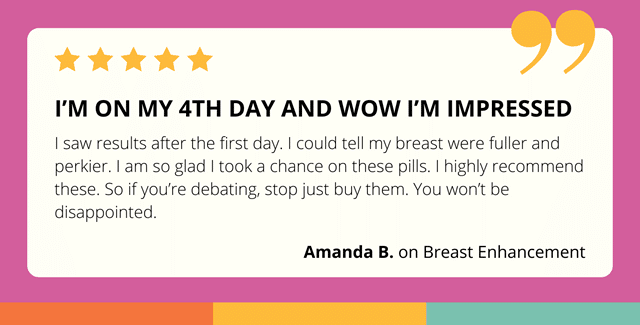
We’re not just focused on cosmetic advancements, either. We understand how challenging hormonal instabilities can be for women.
Our products help bring your body back into a state of equilibrium. Notably, the Hormonal Balance Supplement is here to tackle the nasty symptoms of PMS and menstruation.
However astonishing the modern alternative medicine market might be, regaining control starts with knowledge.
Informing women is a big point of focus for Bust Bunny. Combining factual information and quality products lets you live a life of comfort and ease.
Join us as we explore the following:
When we talk about the menstrual cycle, we’re referring to the entire range of shifts the body goes through monthly as it prepares for a potential pregnancy. In a nutshell, your ovaries will release an egg, and hormones will set the stage for fertilization.
These hormones are our primary point of consideration. They might focus on your reproductive organs, but they affect your entire system. The influence is especially noticeable in secondary sexual characteristics—like your breasts.
The hormone cocktail triggers shifts left, right, and center. We can attribute most of them to two little chemicals—estrogen and progesterone.
The graph below displays how these two fluctuate across a single 28-day cycle.
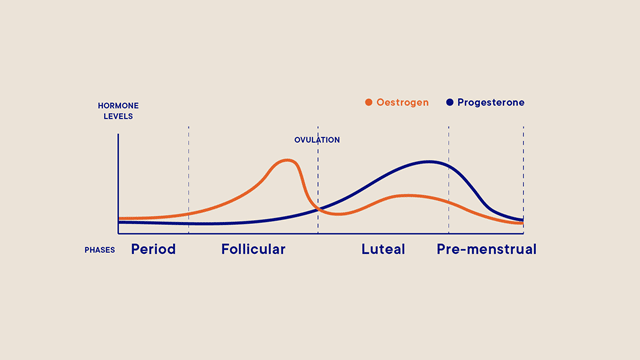
As you can see, the levels of both hormones shift significantly between days one and 28. What does that mean in practice?
These hormones play various roles in male and female bodies. Here are their main functions:
The roles of these two chemicals affect various parts of your system, triggering an avalanche of menstrual and premenstrual symptoms.
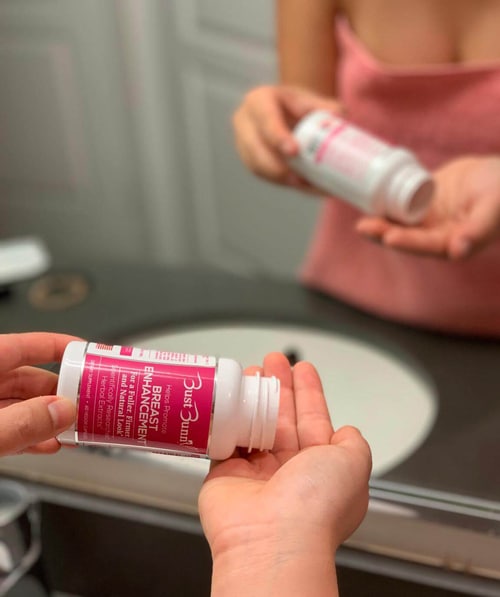
The menstrual cycle has three stages (outside of menstruation itself), centering on the egg release. The body prepares for this event before it happens around day 14 (in a standard 28-day cycle). After that, it launches the processes necessary for supporting a pregnancy.
This dedicated prep work requires varying hormone amounts at different times. The fluctuations induce other bodily changes that occur throughout the cycle.
The table below outlines the three phases, the hormones at play, and their influence.
| Phase | Hormones | What does it feel like? |
| Follicular phase (before an egg is released) | Rising estrogen Low progesterone |
|
| Ovulatory phase (when an egg is released) | Decreasing estrogen Rising progesterone |
|
| Luteal phase (after an egg is released) | Rising estrogen High progesterone |
|
It is during the late luteal phase that most breast size changes happen to your body. These changes are commonly referred to as symptoms of premenstrual syndrome, or PMS. After this phase, you menstruate, and the cycle repeats itself.
Let’s uncover how PMS and the period affect your chest.
The hormonal ebb and flow throughout the menstrual cycle make your breasts change shape and size. While these shifts might seem worrying, they’re a normal part of pregnancy preparation.
Your breasts reach their full potential during the luteal phase, as both estrogen and progesterone levels rise.
Regarding appearance, you’ll enjoy exceptional perkiness. You might also see veiny skin, nipple swelling, and general tenderness. This is the point in your cycle when you’ll reach your largest cup size and firmness.
The surface of your breasts might feel nodular and uneven due to the enlarged milk glands below. This lumpiness smooths out as you start bleeding, and your body realizes that it isn’t pregnant.
As you begin a new cycle (usually by the third day of bleeding), the swelling starts lessening. Your estrogen and progesterone levels drop, and your breasts respond by reducing in shape and size. They also soften, and any lingering soreness disappears.
Premenstrual breast swelling and soreness are common among all women who menstruate, at least to some extent. In general, those in their childbearing years feel the hormonal effects the most, and those taking birth control pills to reduce breast swelling experience symptom reduction.
Let’s answer the million-dollar question. As with most things about female anatomy, how much bigger your breasts get during a period is a very individual thing. There are some general trends we can rely on, though.
For one, your breasts don’t get bigger during your period. They increase a week or two before you menstruate and reach their peak just before your period.
The lingering size boost is a result of hormonal fluctuations, and it usually disappears after three to four days of bleeding.
When it comes to size shifts, you can’t expect to change cups. Most often, it’s only a case of the tissue filling up, causing the perceived perkiness and size increase. In reality, most women don’t gain more than an inch around their bust.
Your breast shape and size might change due to factors that don’t necessarily have to do with menstrual hormones. What are the other common reasons for these shifts?
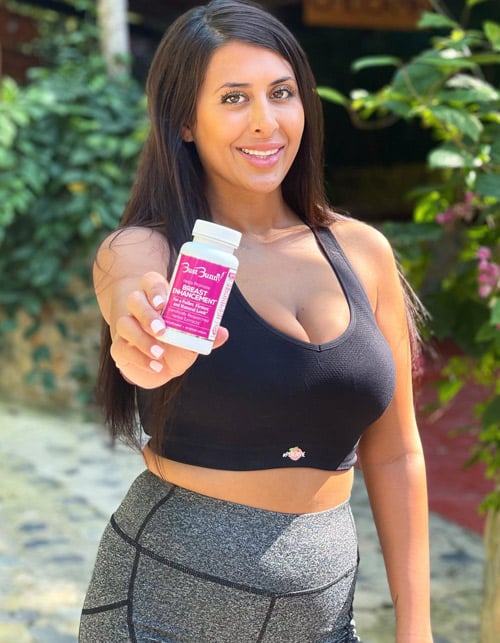
Water retention is the most frequent natural factor. It’s a common PMS symptom that follows many other lifestyle practices, too, such as a high-carb diet. Breasts that retain water are firm and swollen. They might be somewhat sensitive.
Blood circulation during sex and physical activity can temporarily increase breast size and perkiness, too. This change normally isn’t accompanied by tenderness and soreness, but it tends to disappear within a day.
Caffeine might be to blame for texture changes. Tentative studies show that caffeinated beverages might induce a spike in progesterone, causing chest lumps.
Soreness, especially without a particular size increase or drop, can come from any number of reasons. Check our list for a comprehensive overview of reasons for breast pain, swelling, and severe symptoms.
Below is a client testimonial proving that changes in size can be accompanied by soreness and itchiness.
I wish I knew about bust bunny years ago!!
I am on my first bottle and have taken it for a week and a bit and I feel like I notice changes in size. I’ve had itchy and sore breasts here and there which I love because I know it’s working & it’s satisfying. I’ve also noticed that my boobs have started to fill out in my bra. Sooo good! I’m on my first bottle containing 60 capsules & I have 35 left. I’m looking forward to seeing the result after I finish my first 3months. Will keep you posted. Deffs recommend.
– Queen, NZ
In the end, the number one thing to remember is that breast changes (including cup-size growth) are normal for people who menstruate. This sudden makeover is simply one of the many ways your body prepares itself for a pregnancy.
There’s no way to eliminate hormonal fluctuations and everything that follows altogether. However, you can minimize the turbulence they cause.
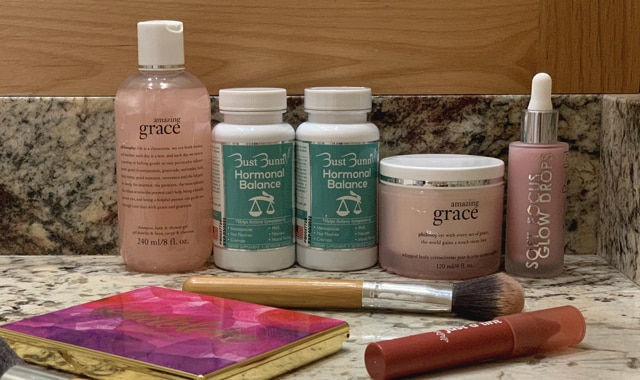
Keep yourself informed to stay happy and safe. Learn what’s normal, know your risk factors, and which natural practices can alleviate premenstrual troubles. Once you have a good knowledge base, take advantage of our Hormonal Balance Supplement for symptom relief.
Regain control of your body and enjoy life all 28 days of the cycle.
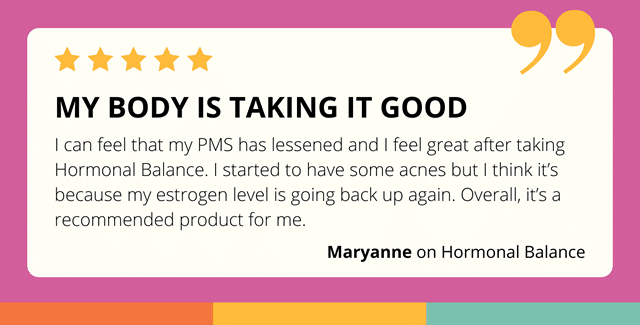
Apart from the swelling that makes your breasts look bigger just before your period, you might also see increased lumpiness as the milk glands enlarge.
Water retention in the belly also translates to your breasts, making them feel heavier than usual. This stretching could cause soreness and aches, especially if your skin isn’t particularly elastic.
Balancing your hormones with healthy living practices is the key factor in preventing heavy instabilities throughout the month.
The following tips might reduce the bust size and texture shifts you experience:
Follow these practices, perform breast self-examination, and go for regular checkups to nip any health issues in the bud. Your breasts will show minimal variations throughout the month.
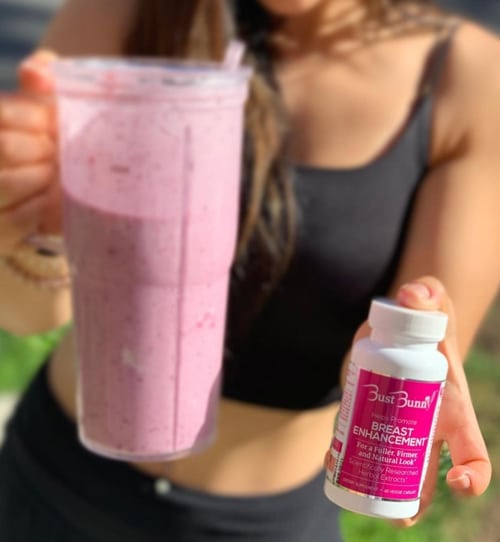
As you menstruate, your breasts lose a bit of volume and become softer. This change results from dropping hormonal levels at the end of the cycle.
Estrogen and progesterone levels decrease after the third day of your period, leaving you with the most accurate depiction of your actual chest size.
Tip: If you prefer your hormone-pumped look, you can mimic it all month long with our natural breast enhancement supplements.
We promise it works, and our customers can attest to that.
I was skeptical at first, however about 2 weeks into using the product when I was pms’ing my boobs got tight.. like pregnancy tight. In the 3 months of my first order, my boobs went from a b cup to a D!!! This product is no risk.. inexpensive and works! It’s a no-brainer!!!
– Jami
Arguably, the worst menstrual symptoms happen during PMS (before you get your period). You may experience premenstrual breast tenderness. Hormonal fluctuations dwindle after this time, making you feel like yourself again.
However, much like breast swelling, symptoms of PMS might carry over to the period itself.
Of course, every woman’s experience is individual. It can also vary from month to month, depending on endless external factors. Practice good lifestyle habits to reduce the effects of other factors, and always contact a physician if any symptom becomes debilitating.
Share on Instagram:
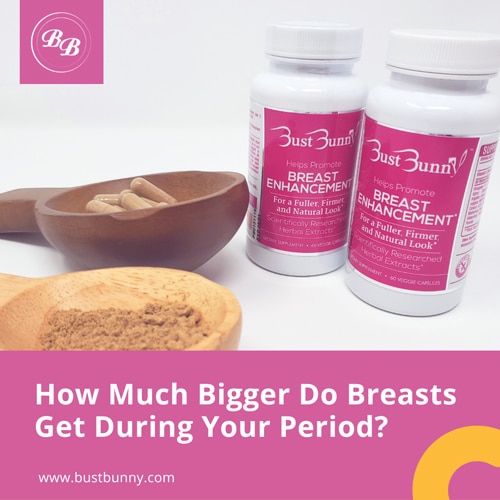
Share on Facebook:
